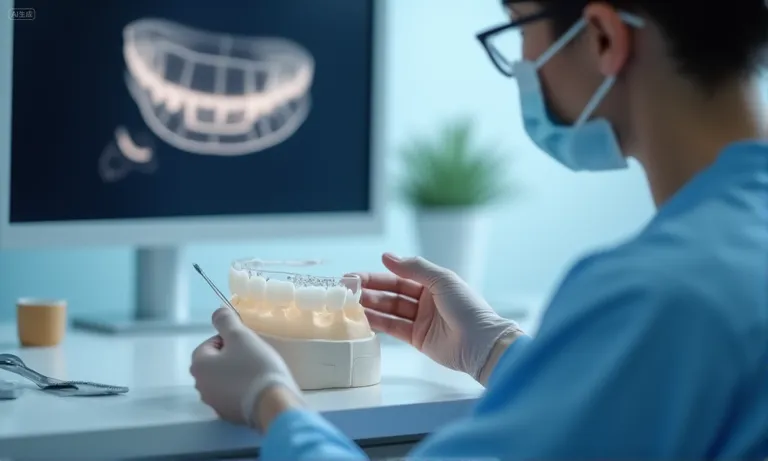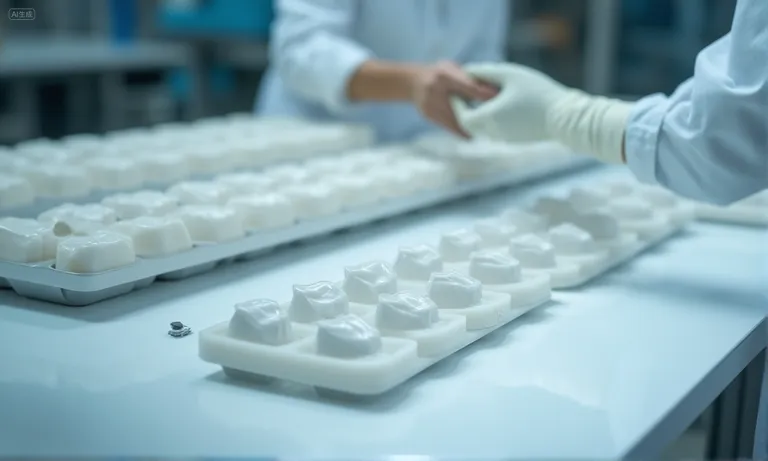When dental professionals and procurement teams consider outsourcing implant manufacturing, the choice between OEM and ODM models goes far beyond a technical distinction. It determines how much design control you retain, how costs are distributed, and how quickly products reach the market. OEM outsourcing prioritizes customization and IP ownership but requires higher upfront investment and longer lead times. ODM accelerates market entry with lower costs but limits flexibility in product differentiation.
Key differences to evaluate include:
- Design Control & IP Ownership: OEM offers full specification control, while ODM relies on manufacturer-driven designs.
- Cost & Speed: OEM demands higher initial investment; ODM reduces expenses and shortens development cycles.
- Customization & Branding: OEM enables unique, branded solutions; ODM and white-label models restrict differentiation.
- Quality & Compliance: OEM typically applies stricter QA processes, while ODM must still comply with regulations such as EU MDR.
- Strategic Fit: OEM supports long-term brand growth, while ODM suits quick market entry or scaling capacity.
By weighing these dimensions and performing thorough due diligence on suppliers, decision-makers can select the outsourcing model that best aligns with their cost targets, compliance requirements, and long-term growth strategy.
What Is OEM in Dental Implant Outsourcing and How Does It Work?
OEM outsourcing in dental implants gives clients maximum control over design and intellectual property, but it also comes with higher upfront investment and longer production timelines. This approach is chosen when clinics or distributors want to deliver highly customized products that reflect their brand and meet strict regulatory standards, even if it requires more resources to manage.

Dental-technician-OEM-implant-design
How does the OEM model define roles and responsibilities between lab and client?
In an OEM setup, the client provides complete design specifications, including materials, fit, and functional requirements. The lab’s role is to manufacture according to those instructions, ensuring consistency and precision. Unlike ODM, where the supplier contributes to design, OEM keeps design authority firmly in the hands of the client.
- Client responsibilities: product design, regulatory approvals, IP ownership.
- Supplier responsibilities: manufacturing execution, quality control, documentation.
This division means clients carry greater responsibility but also gain assurance that the final product reflects their exact vision.
What level of design control and IP ownership does the client retain?
OEM gives the client full ownership of intellectual property, protecting unique designs and branding. This is critical for dental distributors who want exclusive product lines or practices that value differentiation. While this ensures stronger market positioning, it also places pressure on the client to invest in R&D, CAD design, and compliance testing.
What are the cost and lead-time implications of OEM outsourcing?
The trade-off is clear: OEM requires higher upfront costs for design development, CAD software, and prototyping. Manufacturing partners may also need additional tooling or adjustments to accommodate custom designs. Lead times are generally longer compared to ODM because every detail must be validated before scaling production.
Typical implications include:
- Higher initial cost for design and testing.
- Slower time-to-market due to customization steps.
- Long-term ROI through exclusivity and brand value.
In practice, OEM is the right choice for dental businesses prioritizing customization, IP protection, and regulatory compliance over immediate speed or low-cost entry.
Deciding between OEM and ODM is one piece of the broader outsourcing puzzle. To understand how these models fit into overall outsourcing strategies, risk management, and long-term value, explore [How to Evaluate Outsourcing Options for Dental Implant Production] for a complete framework.
What Does ODM Mean in Dental Implant Outsourcing?
ODM outsourcing in dental implants shifts design responsibility from the client to the manufacturer, allowing faster market entry and lower upfront costs but limiting customization and intellectual property control. This model is attractive for businesses that want to scale quickly or test new markets without heavy investment, yet it comes with risks of product similarity and reduced brand differentiation.

Dental-technician-ODM-implant-production
How does ODM differ from OEM in terms of design responsibility?
With ODM, the manufacturer provides ready-made designs that can be adapted slightly to meet client preferences. The client chooses from a catalog or modifies existing templates, but the core design remains under the lab’s control. This reduces the client’s role in R&D and accelerates product readiness.
- ODM responsibility: design development, prototyping, material selection.
- Client responsibility: branding, distribution, market adaptation.
This streamlined division allows even smaller clinics or distributors to offer implant solutions without a dedicated design team.
What are the advantages of ODM for cost, speed, and market entry?
ODM’s main value lies in lower costs and faster timelines. Since the lab already has validated designs, clients avoid heavy investment in CAD/CAM design, prototyping, or regulatory testing from scratch.
Benefits include:
- Lower setup cost compared to OEM.
- Quicker production cycles and shorter lead times.
- Easier scalability for distributors entering new regions.
These advantages make ODM a popular choice for companies that prioritize market responsiveness over long-term exclusivity.
What cost and compliance trade-offs should be considered in ODM?
The trade-off is that ODM often limits intellectual property rights and customization. Clients typically do not own the design and may share similar products with competitors. Additionally, while ODM products must comply with regulations such as MDR or FDA, the client has less direct influence over the compliance pathway, relying heavily on the manufacturer’s processes.
Key considerations:
- IP risk: limited ownership of unique designs.
- Compliance dependency: client must trust supplier’s documentation.
- Branding limits: products may look similar to other distributors’ lines.
ODM works best when speed, affordability, and efficiency matter more than deep product differentiation or IP protection.
How Do OEM and ODM Compare in Key Business Dimensions?
OEM and ODM outsourcing differ most in customization, cost, compliance, and scalability. OEM empowers clients with full control and branding flexibility but requires higher upfront investment. ODM emphasizes efficiency and affordability, though it sacrifices differentiation. The right choice depends on whether a business values unique identity or fast, low-cost market entry.

OEM-vs-ODM-dental-implant-comparison
Which model provides more flexibility for customization and branding?
OEM offers maximum flexibility and brand ownership, allowing labs to define every detail of design and retain IP rights. ODM, by contrast, provides standardized frameworks with only minor adjustments.
During a recent project, a European distributor insisted on OEM production because they wanted an implant crown with a specific cervical profile for their market. The lab team iterated several margin designs with the client’s input, something ODM could not have delivered. That investment paid off as the distributor marketed the crown as their “signature system.”
- OEM: strong differentiation, exclusive branding.
- ODM: faster availability, limited customization.
How do cost structures and ROI differ between OEM and ODM?
OEM requires high initial spending on design, prototyping, and validation, but supports higher margins and long-term brand equity. ODM lowers the barrier to entry, with predictable unit pricing and quick ROI.
| Factor | OEM | ODM |
|---|---|---|
| Initial Cost | High (design, validation, tooling) | Low (shared templates, supplier-led) |
| ROI Horizon | Long-term, tied to unique brand | Short-term, tied to fast turnover |
| Scalability Cost | Higher as each design expands | Lower, easy to multiply volume |
How does each approach address quality assurance and regulatory compliance?
OEM allows the client to set their own QA standards, with full transparency in testing, documentation, and audits. ODM suppliers manage compliance centrally, which reduces client workload but requires trust and independent verification.
In one case, a U.S. buyer relying on ODM received a batch where abutment tolerances varied slightly. The issue was resolved after the supplier shared their ISO 13485 audit trail—but it highlighted how ODM clients depend heavily on factory oversight rather than their own checks.
- OEM: direct control, higher assurance.
- ODM: supplier-managed, lower client visibility.
Which model scales better with growing case volumes?
ODM scales more quickly, thanks to ready-made infrastructure and standardized designs. OEM scaling requires expanding resources and QA processes, but gives businesses a stronger long-term foundation.
For example, a midsize Asian lab that started with ODM eventually moved part of its portfolio to OEM once volumes stabilized, using ODM for entry-level products and OEM for high-margin signature lines. This hybrid approach gave them both speed and brand growth.
OEM fits clinics and distributors investing in brand equity and patient trust, while ODM suits those seeking affordable, rapid expansion with fewer barriers to entry.
Where White-Label Fits in OEM and ODM for Dental Implants
White-label solutions sit between full OEM customization and ODM standardization. They allow distributors to rebrand pre-designed products, accelerating market entry without heavy investment. However, regulatory frameworks in dental and medical devices—such as EU MDR—mean white-label is not always as straightforward as in consumer goods.

dental-implant-white-label-packaging
Is white-label essentially a simplified form of ODM?
Yes. White-label is essentially an ODM product repackaged under another brand name. The underlying design and manufacturing remain controlled by the factory, but the market-facing identity is owned by the distributor.
- White-label = fastest way to build a brand presence.
- Minimal customization—mainly packaging, instructions, and branding.
- Regulatory responsibility still lies with the brand owner, which can be complex in medical contexts.
In what cases do dental distributors prefer white-label solutions?
Distributors often choose white-label when entering price-sensitive markets or when testing demand without committing to OEM-level investment. It provides a low-risk way to offer implant components under their own name.
For example, one Southeast Asian distributor we worked with needed to launch a private-label implant line quickly to compete with low-cost imports. They chose a white-label abutment series: same ODM base, but packaged with their branding and IFU (instructions for use). It gave them instant market presence within weeks, something OEM development could not achieve in such a short time.
- Ideal for new entrants testing demand.
- Attractive for mid-tier distributors competing on price.
- Limited differentiation—products may look identical to other brands.
How do medical regulations (e.g., EU MDR) affect white-label viability?
Unlike consumer industries, white-label in dental implants is heavily shaped by compliance rules. Regulations such as MDR in Europe or FDA in the U.S. make the brand owner legally responsible for product safety and traceability. This means that even if the factory produces the item, the distributor’s name on the label ties them to post-market surveillance and liability.
One European client underestimated this when adopting white-label implant screws. They later faced a regulatory audit requiring clinical data under their brand, even though the screws were identical to the supplier’s ODM line. The lesson: white-label reduces design cost but raises compliance responsibility.
- MDR/EU: requires full technical documentation under distributor’s brand.
- FDA: white-labelers must still register as manufacturers of record.
- Clients must ensure their supplier provides complete documentation for audits.
White-label works best as a short-term market entry strategy or for low-differentiation components like healing caps, but decision-makers must balance speed and branding with the compliance burden it shifts onto them.
How to Decide Between OEM and ODM in Dental Implant Outsourcing
The right choice between OEM and ODM depends on your strategic priorities, risk tolerance, and growth goals. OEM is better when long-term differentiation and IP ownership matter, while ODM suits businesses prioritizing fast market entry and lower upfront cost. Decision-makers should weigh short-term needs against long-term brand strategy and perform due diligence to avoid compliance risks.

dental-implant-oem-vs-odm-decision-meeting
What criteria should guide the choice between OEM and ODM?
Decision criteria include:
- Control vs. Speed: OEM offers full design ownership but requires time and cost; ODM accelerates entry with trade-offs in uniqueness.
- Compliance Responsibility: OEM documentation is usually robust; ODM/white-label puts more burden on the distributor.
- Scalability: OEM aligns with long-term brand growth; ODM scales volume quickly but may limit differentiation later.
Decision Checklist (OEM vs. ODM)
| Factor | OEM | ODM / White-Label |
|---|---|---|
| Design Control | Full | Limited |
| IP Ownership | Client | Manufacturer |
| Upfront Cost | High | Low |
| Time to Market | Longer | Faster |
| Compliance | Supplier-driven, shared | Client bears more responsibility |
| Best For | Long-term brand, premium positioning | Quick entry, testing markets, price competition |
How do short-term needs versus long-term strategy affect the decision?
- Short-term focus: ODM makes sense when speed, affordability, and market testing are priorities.
- Long-term strategy: OEM becomes essential when building a differentiated portfolio and protecting IP.
We once worked with a Middle Eastern distributor who launched implants under ODM to capture quick sales in a cost-sensitive market. Within three years, they shifted to OEM for premium abutments, as their clinicians demanded unique features and stronger branding. This transition shows how companies may start ODM but evolve to OEM as their strategy matures.
What due diligence steps help reduce risks in outsourcing partnerships?
Due diligence is non-negotiable. Key steps include:
- Audit supplier’s certifications (ISO, CE, FDA).
- Request technical documentation and verify traceability.
- Review remake rates and QC history.
- Run trial batches before committing to large volumes.
- Clarify liability and warranty terms in contracts.
A European client skipped step 2 when signing an ODM deal. During an MDR audit, they discovered incomplete technical files and faced a product recall. The hidden cost was far higher than the savings from ODM pricing. This illustrates why regulatory due diligence is as important as cost analysis.
In the end, the best choice is not OEM or ODM alone but knowing when to deploy each. Many successful distributors start with ODM for speed, then invest in OEM for long-term differentiation. The key is aligning your outsourcing model with your business horizon and compliance readiness.
Conclusion
Choosing between OEM and ODM in dental implant outsourcing is ultimately about aligning your business vision with operational realities. OEM provides full design control, IP ownership, and brand differentiation, but requires higher upfront investment and longer development cycles. ODM, by contrast, lowers cost and speeds up market entry, though it comes with limits on customization and compliance responsibility.
The most successful dental businesses often combine both models strategically—using ODM to test new markets or expand capacity quickly, and investing in OEM for long-term brand strength and regulatory security. What matters most is not simply the model itself, but whether your supplier can provide the reliability, documentation, and scalability to support your growth path.
By approaching the OEM vs. ODM choice with clear priorities, thorough due diligence, and a long-term perspective, decision-makers can turn outsourcing into a powerful driver of efficiency, innovation, and trust in their dental implant business.


